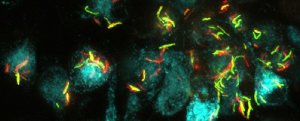 By Dennis Thompson HealthDay Reporter
By Dennis Thompson HealthDay Reporter
TUESDAY, Nov. 28, 2023 (HealthDay News)
Folks who smoke weed along with cigarettes are doing serious damage to their lungs, a new study warns.
People who do both are 12 times more likely to develop emphysema than nonsmokers, due to the damage they’re doing to the lung’s air sacs, researchers report.
“There is a common public misconception that marijuana smoking is not harmful,” said researcher Dr. Jessie Kang, a cardiothoracic radiologist at Dalhousie University in Nova Scotia, Canada.
“With our study, we show that there are physical effects of marijuana smoking on the lungs and that cigarette smoking and marijuana smoking may have a combined damaging effect on the lungs,” Kang added.
Even though weed is one of the most widely used psychoactive substances in the world, little is known about the effects of smoking cannabis on a person’s lung health, researchers noted.
Tons of research has linked cigarette smoking to lung cancer, emphysema and COPD, but “currently not much research exists on the effects of marijuana smoking on the lungs,” Kang noted.
For their study, Kang and her colleagues examined chest CT images of four patient groups – nonsmokers, cigarette smokers, marijuana smokers and combined tobacco and weed smokers.
Weed smokers included in the study had toked at least four times a month for at least two years, researchers said.
In addition to increased risk of emphysema, combined weed and cigarette smokers also were three to four times more likely to have airway wall thickening, researchers said. This thickening can contribute to infections, scarring and further airway damage.
The association with emphysema and airway wall thickening was not as significant for people who smoked either weed or cigarettes alone, results show.
This could mean that weed and cigarette smoke might somehow interact with each other to have even worse effects on the lungs and airways, the researchers said.
The findings were to be presented Tuesday at the Radiological Society of North America (RSNA) meeting in Chicago. Research presented at a medical meeting should be considered preliminary until published in a peer-reviewed journal.
“The [average] number of marijuana smoking years was less than compared to cigarette smokers and combined marijuana and cigarette smokers,” Kang said in a meeting news release. “However, marijuana that is smoked is often unfiltered, which can potentially lead to more damaging particles entering the airways and lungs.”
“More research needs to be done in this area, so the public can make an informed decision on their recreational usage of marijuana,” Kang added.

